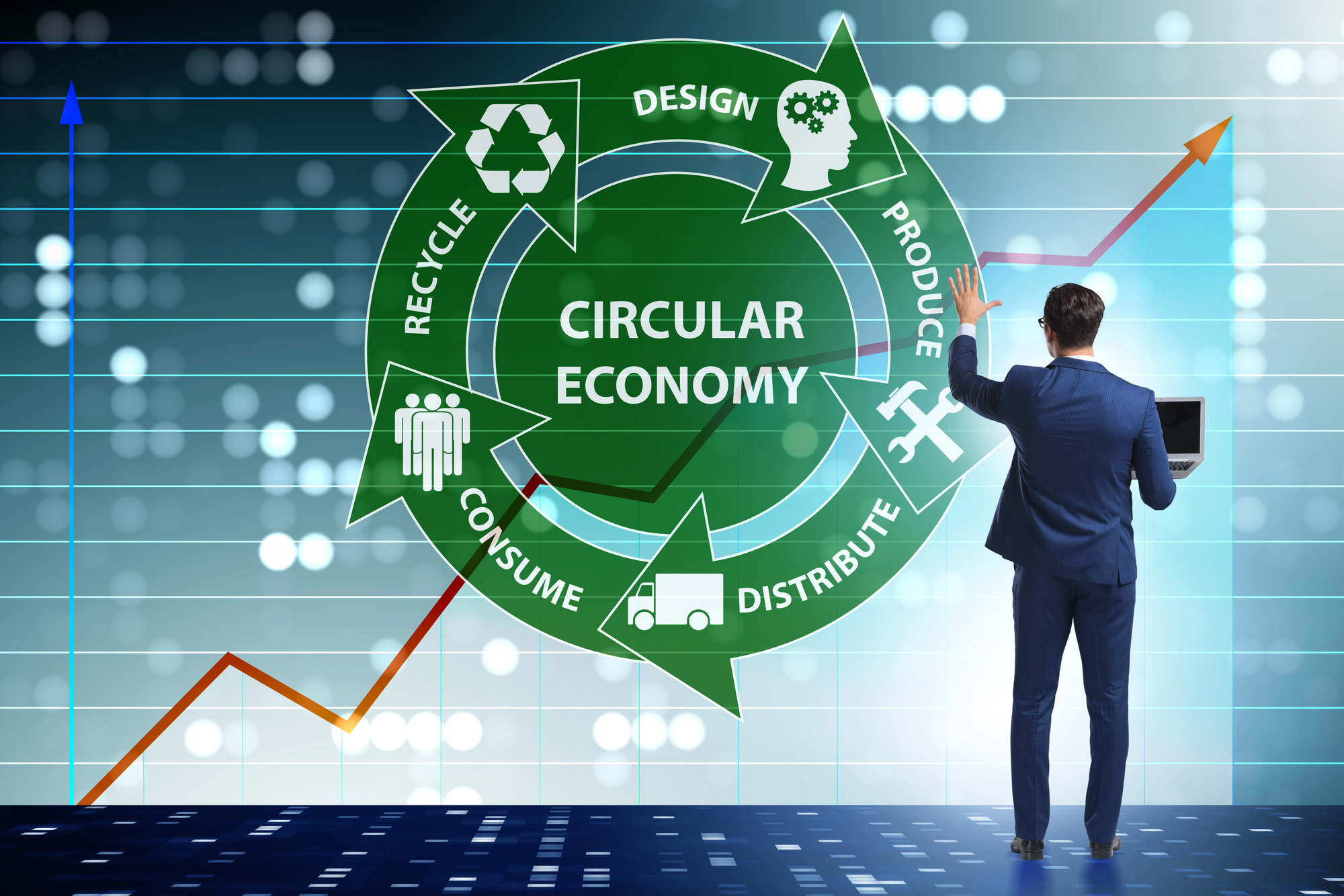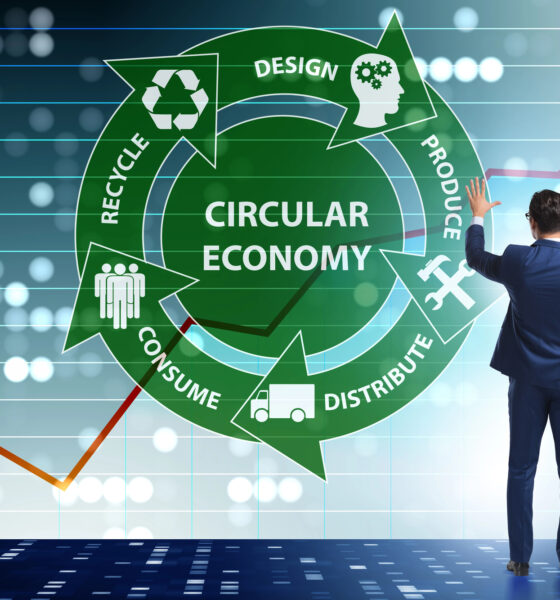

Economy
Why Collaboration is Key for a Sustainable Circular Economy
The concept of a circular economy has gained significant traction in recent years as a potential solution to our global sustainability crisis. At its core, a circular economy aims to eliminate waste and maximize resource efficiency by keeping materials in use for as long as possible. It’s a vital component of preserving biodiversity, minimizing what’s sent to landfill, and stimulating the economy and innovation.
However, achieving this ambitious goal requires more than just individual efforts. It demands collaborative action on a grander scale than we’re currently seeing. Here, we’ll explore why collaboration among businesses, governments, and consumers isn’t just beneficial, but essential in order to create and maintain a sustainable circular economy.
What are the challenges in implementing a circular economy?
Despite the promise of a cleaner planet and reduced waste, implementing a circular economy actually poses several challenges for individuals and businesses alike. One of the biggest hurdles is waste management. Since most of our current systems are ill-equipped to handle the complex sorting and processing required for efficient recycling and reuse, it’s not possible to operate in a circular way right now.
There are also technological barriers to overcome, such as those needed to develop new materials and processes to facilitate circularity. Alongside these issues is the problem of economic constraints – transitioning to new, circular models requires a significant upfront investment which can be difficult to find funds for. This is where collaboration comes in. The complexities of transitioning to a circular economy are too vast for individuals to tackle alone, whether that’s consumers or eco-minded entrepreneurs.
What does collaboration look like?
Collaboration in sustainability means implementing coordination across supply chains, industries and sectors, and stakeholders to drive systemic change. Not only can collaboration mean greater access to resources but also knowledge sharing and promoting the cause.
For example, one leading resale business is changing visual storytellers’ attitudes and behaviors towards circularity through partnerships and digital marketing, reaching 545 million people in the process. This kind of reach spreads the word about the importance of circularity for the environment and can work to change minds on why thinking sustainably matters.
Similarly, businesses can work with policymakers to create supportive regulatory change and incentivize circular practices. Consumers drive demand for sustainable products and systems, and the more companies can do to provide a wider range of choices in this area, the more likely customers are to choose them.
Research institutions and academia also contribute widely to the development of new technologies, providing evidence-based insights that will guide decision-making. Stanford University is just one example of institutions providing programs and initiatives that will make great strides in interdisciplinary energy research. The interplay between these stakeholders is vital for creating a holistic approach to circularity.
Implementing collaboration between businesses
Partnerships between industries is another cornerstone of circular economy collaboration. In working together rather than competing, businesses can help to create closed-loop systems where one company’s waste becomes another’s raw material. Supply chain integration is crucial here, allowing for better tracking of materials and more efficient resource use.
Shared resources and infrastructure, such as recycling facilities or reverse logistics networks, can also help to reduce costs and improve the viability of circular business models. These collaborative efforts not only benefit companies on an individual level but also contribute to the overall resilience and sustainability of the economic system for entire sectors.
What is the Government’s role in fostering collaboration?
Governments play a pivotal role in fostering collaboration for a circular economy. By developing supportive policy frameworks and offering incentives, they can encourage businesses and consumers on a global scale to adopt circular practices. The importance of international collaboration was made clear at the Fourth United Nations Environment Assembly (UNEA-4) in 2019, where a session centered on “Innovative Solutions for Environmental Challenges and Sustainable Consumption and Production.”
The event saw the participation of five heads of state and government, 157 ministers and deputy ministers, and nearly 5,000 attendees from 179 nations. The outcome included a Ministerial Declaration and 26 thematic resolutions addressing issues such as sustainable consumption and production, resource efficiency, chemicals and waste management, biodiversity and ecosystems, and environmental governance.
Fostering consumer engagement
While the majority of change needs to come from businesses and policymakers, that’s not to say consumers are just passive participants in the circular economy. Raising awareness and providing education about circular principles is essential for shifting consumption patterns and behaviors. Engaging consumers in decision-making processes can lead to products and services that better meet circular economy goals. For example, collaborative consumption models such as sharing platforms or product-as-a-service offerings, demonstrate how consumer involvement can directly contribute to reducing resource use and waste.
Overcoming barriers to collaboration
While we’ve shown how collaboration is essential for building a more sustainable future, it’s not without its challenges. Building trust among stakeholders with different priorities and interests is difficult but a key aspect of success in this area. In order to achieve this, companies need to prioritize transparent communication and a willingness to share both risks and rewards.
Aligning diverse interests can be tough, but finding common ground in shared sustainability goals will provide a foundation for cooperation. Developing common standards and metrics for measuring circularity and impact is also important, since it allows for consistent evaluation and comparison of different initiatives.
What does the future circular economy look like?
Right now, our economy is largely linear, despite the pressure on all of us to do more to prevent climate change. But a circular approach would mean designing products and processes that eliminate waste and pollution to put materials back into the economy and into regenerating the environment. It’s a huge opportunity for us all, but especially for businesses, stakeholders and policymakers to move in a different direction for a more sustainable future. However, it’s not an easy journey and it’s one which requires us to work together in order to yield the best results.


 Environment10 months ago
Environment10 months agoAre Polymer Banknotes: an Eco-Friendly Trend or a Groundswell?

 Environment12 months ago
Environment12 months agoEco-Friendly Home Improvements: Top 7 Upgrades for 2025

 Features9 months ago
Features9 months agoEco-Friendly Cryptocurrencies: Sustainable Investment Choices

 Features10 months ago
Features10 months agoEco-Friendly Crypto Traders Must Find the Right Exchange

















